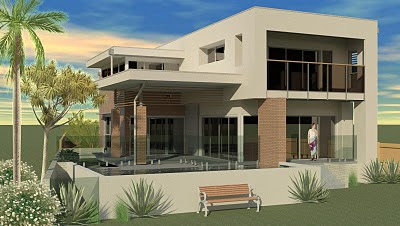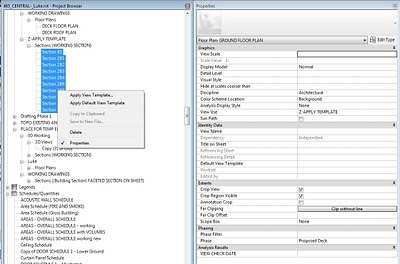A short post is often best.
Having trouble overriding dimensions to windows?
http://rvit.wordpress.com/2010/05/05/crazy-dimensions-strings/
Productivity tip for loading families:
- Open a new Explorer window and browse to the location of your Families (or the Metric Library)
- Use Vista ‘Search’ to quickly find the family you want to load.
- Multi-select (using Ctrl) the files you want to load and drag them to Revit.
- Release your mouse button while over the Revit window.
- Revit has now loaded your families (and upgraded them if necessary)!
I learnt something interesting yesterday. I learned the difference between being Aggressive, Passive and Assertive.
An Aggressive person will totally disregard your opinion and basically ‘bite your head off’. On the other hand, a Passive person won’t speak up even if they feel strongly about something. But –
An Assertive person Listens to and Acknowledges the opinions of others, and then respectfully but firmly Expresses their own opinion.
In practice – let’s say 3 people like 3 different colours. Mr Aggressive says ‘Red is the best colour and you are all idiots if you don’t agree with me!’ Mr Passive loves Yellow, but he meekly nods. Mr Assertive says, ‘I respect the fact that you like Red. However, I personally like the colour Green.’
Mr Assertive does not need others to change – he just shows respect and wants to be respected. His beliefs are not dependent on forcing others to change.
When it comes to BIM, the ‘aggressive’ stance is often taken (AutoCAD is rubbish!) However, perhaps a more successful tactic would be to truly Listen, Acknowledge, and then firmly express why You believe in BIM.
One of the Most Viewed Knowledge Base Issues relates to the inability to print using the ‘Ambient Occlusion’ option.
There is a very simply way to get around this. Just use ‘Print Screen’ on your keyboard when you have a view using Ambient Occlusion open on your screen. Then paste the image into Irfanview (or your viewer of choice), crop it and then resize to get the DPI that you want.
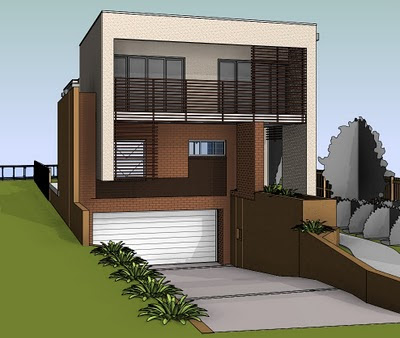
This is obviously not an elegant way to go about things, but for the time being, it works 🙂
Awesome post from Zach at this link.
This is kinda what I alluded to back in my post about Adaptive Components (when I said there would be some ‘neat workarounds and tricks’ coming out).
This certainly is a ‘neat workaround’ isn’t it? It demonstrates the power of adaptive components, along with an understanding of Revit Categories (in this case, the ‘Cut Dominance’ of Structural Columns is exploited). Zach certainly and repeatedly discourages the use of this method, but provided you have an understanding of the ‘cons’ of this level of hack, you should be ok.
If you understand ‘What Revit Wants’ when it comes to Categories, you too can come up with similar tricks to Zach’s.
After a few emails back and forth to a very helpful person at Autodesk, I finally tried putting both the Properties Palette and the Project Browser onto the ONE MONITOR – and the problem disappeared! You can do this by ‘double clicking’ on the top bar of the Properties Palette and Project Browser – this moves them into the default position.
Image of problem fixed (notice that ‘common’ appears in the dropdown list):
So, this isn’t strictly a ‘solution’, as I prefer to work with two monitors. But it will do for now.
Properties Palette on second monitor (problem):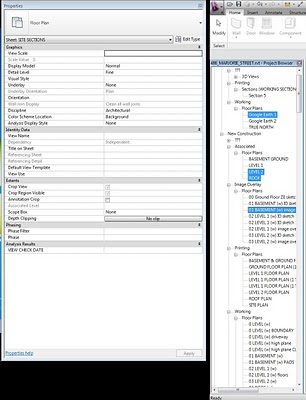
Project Browser on second monitor (problem):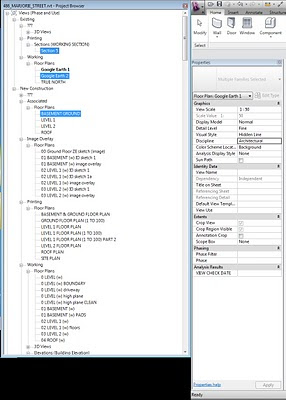
Has this happened to you? Feel free to comment.
If you select multiple views in the Project Browser in Revit 2011, how would you modify their common properties?
If you attempt to directly modify them in the open Properties palette, they are not modified. In fact, the only thing that is modified is the ‘active’ view – not the ones you have selected in the Project Browser.
The even weirder part is that the Properties palette shows a mixture of properties from the selected views in the Project Browsers AND the active view (which is not selected). Scary!
This is a dangerous little workflow anomaly. Keep it in mind until the Factory fixes this up.
If you haven’t already heard, AUGI Wish List voting is now open. Have a vote for Revit features here or AutoCAD features here.

